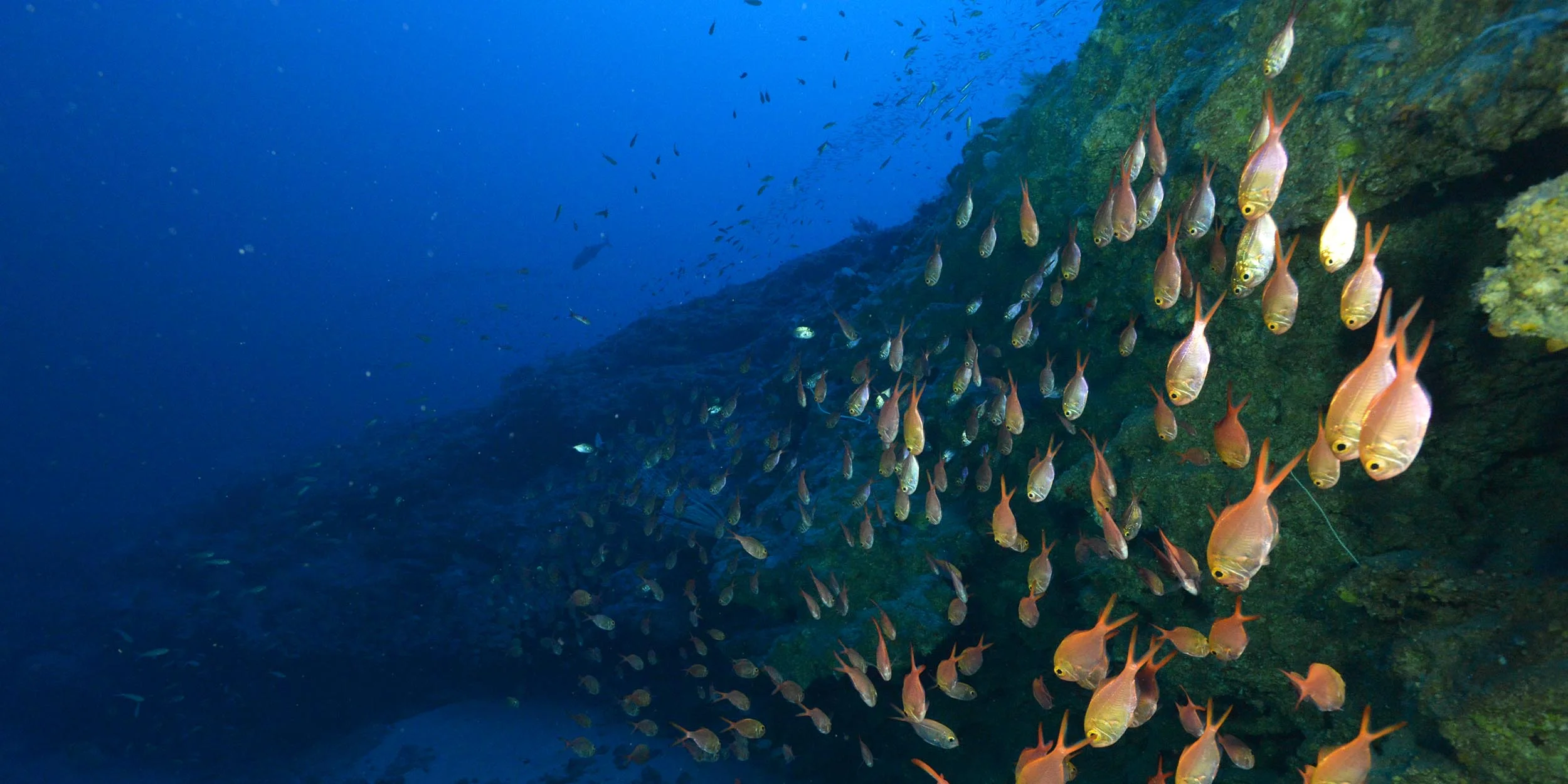SHELF edge
The shelf edge is found where the shelf steepens and drops off into the deep sea. This steeper area is also considered as the upper section of the continental margin. In places where this descent is steepest and dramatic, the margin is like an underwater escarpment or cliff. The shelf edge can be considered the true edge of the continent, rather than the coastline which slopes rather gently in most places. The shelf edge is special because it is a productive area where the oceanography (water movement) interacts with the topography to support dense filter feeding communities, particularly in steep areas.
South Africa’s west coast has one of the deepest continental margins in the world with the shelf edge being seldom shallower than 350 m and with steep sections of the margin occurring as deep as 600 m in some places. The shelf edge is far offshore with the steepest section or shelf break occurring 250 km offshore of the Orange River and 50 km offshore of Cape Point. The west coast shelf edge is very productive and is dominated by sandy slopes with hermit crabs, raspberry starfish and fishes such as hake, dragonets and kingklip. In contrast, the east coast has the deepsea on its doorstep, with the shelf edge being very close to the coast. The narrowest shelf occurs off Maputaland and Pondoland, where the shelf break occurs at a depth of about 100 m and is closest to shore off Port St Johns at just 6km offshore! The strong scouring effect of the flow of the powerful Agulhas current means that much of the east and south coast shelf edge is rocky as sediment. Deep water corals including stony corals, lace corals, black corals and seafans characterise rocky shelf edge ecosystems on the west and south coast. Pressures on these ecosystems include shelf edge fisheries such as the hake trawl fishery, midwater trawl fishery, deep water crustacean trawl fishery and the large pelagic or longline fishery. Oil and gas activities and seabed mining is increasingly occurring on shelf edge areas in a global context. In South Africa, the first petroleum wellheads have recently been drilled at these depths and phosphate exploration has been initiated.
Protection for important shelf edge ecosystems are provided in Amathole Offshore MPA, Brown's Bank Corals MPA, Southwest Indian Seamounts MPA, Protea Banks MPA, Aliwal Shoal Offshore MPA, uThukela Banks MPA and Orange Shelf Edge MPA.





